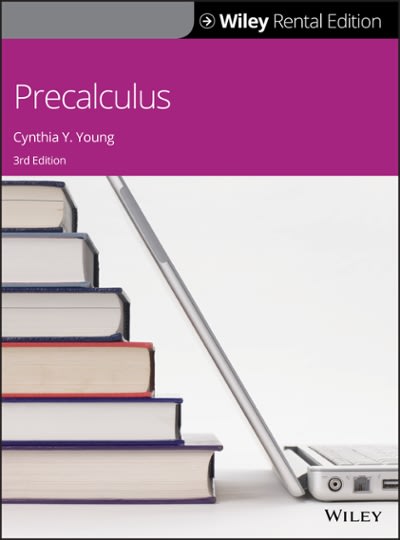Question
JAMA https://jamanetwork.com/journals/jamapediatrics/article-abstract/2694800 October 2018 Association of IgE-Mediated Allergy With Risk of Complicated Appendicitis in a Pediatric Population Question Do children with IgE-mediated allergy have a
JAMAhttps://jamanetwork.com/journals/jamapediatrics/article-abstract/2694800
October 2018 Association of IgE-Mediated Allergy With Risk of Complicated Appendicitis in a Pediatric Population
Question Do children with IgE-mediated allergy have a lower risk of complicated appendicitis?
Findings In this cohort study of 605 children undergoing appendectomy, those with IgE-mediated allergy had a 3 times lower risk of complicated appendicitis compared with those without allergy.
Meaning These findings present previously unknown risk factors for complicated appendicitis and shed light on pathogenesis and clinical detection of adverse outcomes.
Abstract
Importance Childhood appendicitis is commonly complicated by gangrene and perforation, yet the causes of complicated appendicitis and how to avoid it remain unknown.
Objective To investigate whether children with IgE-mediated allergy have a lower risk of complicated appendicitis.
Design, Setting, and Participants This retrospective cohort study included all consecutive patients younger than 15 years (hereinafter referred to as children) who underwent appendectomy for acute appendicitis at a tertiary pediatric surgery center in Sweden between January 1, 2007, through July 31, 2017. Children were stratified between those with and without IgE-mediated allergies.
Main Outcome and Measures Risk of complicated appendicitis with gangrene or perforation, with occurrence of IgE-mediated allergy as an independent variable and adjusted for age, sex, primary health care contacts, seasonal antigenic exposure, allergy medications, appendicolith, and duration of symptoms.
Results Of 605 included children (63.0% boys; median age, 10 years; interquartile range, 7-12 years), 102 (16.9%) had IgE-mediated allergy and 503 (83.1%) had no allergy. Complicated appendicitis occurred in 20 children with IgE-mediated allergy (19.6%) compared with 236 with no allergy (46.9%; adjusted odds ratio, 0.33; 95% CI, 0.18-0.59). No significant allergy effect modification by sex, seasonal antigenic exposure, or allergy medication was found. Children with IgE-mediated allergy had a shorter hospital stay (median, 2 days for both groups; interquartile range, 1-2 days vs 1-5 days;P=.004).
Conclusions and Relevance In this study, children with IgE-mediated allergy had a lower risk of complicated appendicitis. The findings suggest that immunologic disposition modifies the clinical pattern of appendiceal disease. This theory introduces novel opportunities for understanding of the pathogenesis and clinical decision making for one of childhood's most common surgical emergencies.
Show how many children in each group would have suffered complications if the rates of complicated surgery had stayed the same, but the sample sizes were LARGER. Use the proportions from the study in your notes to complete the table below.
| Group 1 (IgE): | Group 2 (No Allergy): |
x = | (A) | (B) |
n= | 169 | 831 |
p-hat | 0.196 | (C) |
(A) is
(B) is
(C) is
Options:
20, 390, 33, 102, 236, 503, 605
0.469, 0.169, 0.203
2.) If the rates of complicated surgery had stayed the same, but the sample sizes were SMALLER what would happen? For example, if the IgE group = 51 children and Non-allergy group = 252, then.....
The test statistic would be________and the p-value would be ________
options:
moreextreme, lessextreme
larger, smaller
3.) Using the data given in the study, estimate the proportion of IgE medicated children in the entire Swedish population. Use a confidence level of 99%. (Hint: do you need a one-sample or two-sample procedure?)
Write a sentence to interpret your interval that gives the point estimate and margin of error in percent form, with both values rounded to one decimal place.
a.) With 99% confidence, we estimate the proportion of IgE medicated children in the entire Swedish population to be 27.3% + 11.6%
b.) With 99% confidence, we estimate the proportion of IgE medicated children in the entire Swedish population to be83.1% + 3.9%.
c.) With 99% confidence, we estimate the proportion of IgE medicated children in the entire Swedish population to be20.3% + 4.6%.
d.) With 99% confidence, we estimate the proportion of IgE medicated children in the entire Swedish population to be16.9% + 2.9%
e.) With 99% confidence, we estimate the proportion of IgE medicated children in the entire Swedish population to be16.9% + 3.9%.
Step by Step Solution
There are 3 Steps involved in it
Step: 1

Get Instant Access to Expert-Tailored Solutions
See step-by-step solutions with expert insights and AI powered tools for academic success
Step: 2

Step: 3

Ace Your Homework with AI
Get the answers you need in no time with our AI-driven, step-by-step assistance
Get Started


